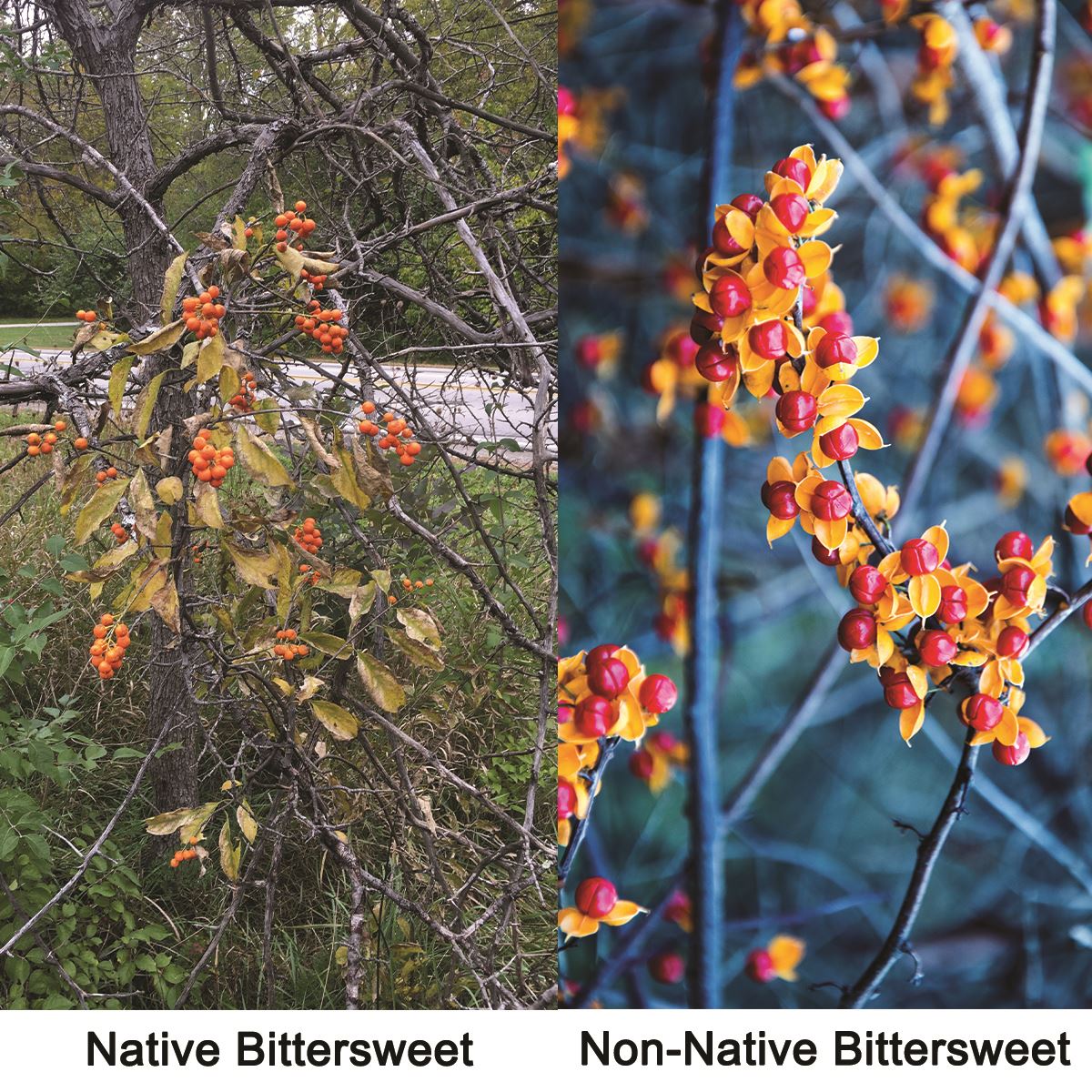Be Wary of the Berry

Like a forest boa constrictor, Asiatic Bittersweet (Celastrus orbiculatus), a common invasive species, can slither into a natural area and silently squeeze the life out of a habitat. Through its aggressive habit of coiling around tree trunks, it can quickly wrap tightly with the intent to girdle and overtop trees while choking out native plants below. Vine diameters can even thickly span to seven inches and lengths can be up to sixty foot. Found throughout the Metroparks, it occurs in both sun and shade areas in wooded habitats, as well as meadow edges. This plant was introduced from Asia in 1860 as an ornamental and, due to its colorful berries, is often used in dried floral arrangements this time of year. Each small, red and yellow berry contains three to six seeds that can be easily spread to other parts of the landscape by improper disposal or by wildlife dispersal. With each vine able to produce numerous berries, many offspring can easily result.
Asiatic Bittersweet is often confused with our native Bittersweet (Celastrus scandens---also known as American Bittersweet) that grows in some of the same habitat. Our native Bittersweet can mainly be distinguished from the non-native variety by its elliptical leaf shape, less aggressive nature, and the clusters of the orange and red berries growing at the end of the branchlets (see adjacent photo of plant growing at Blue Creek). Through careful identification, Metroparks is working to conserve the native Bittersweet in our natural areas, while spending much time eradicating its invasive look alike.
Invasive plant removal in the Metroparks is the most time consuming natural resource management practice totaling approximately $125,000.00 annually in labor, equipment maintenance, and supplies. Woody species like Buckthorn, Honeysuckle, Autumn Olive and Asiatic Bittersweet are at the top of the priority list. Through outcompeting other plants, these species are quickly capable of taking over entire habitats which can alter the diversity of native wildlife species and affect the overall health of the ecosystem.